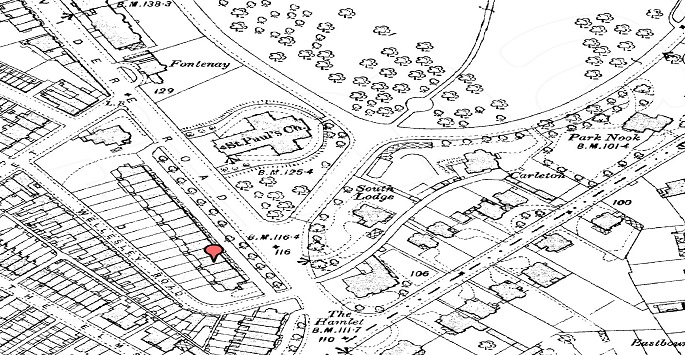Princes Park to Central Asia (and back)
Posted on: 17 October 2022 in 2022 posts

I was two days into my archival work when the address at the top of a letter I was reading made me jump on my uncomfortable chair in the reading room of the Central State Archive of the Republic of Uzbekistan: 13 Wellesley Terrace, Princes Park, Liverpool.
“Gosh -I thought- I pass this house when I cycle into work!”
Included in a stack of messages in Russian, English, and German, this letter was part of the correspondence that led in 1911 to the hiring of Harold Raisbeck Jones, based in Liverpool, by the Committee of the Kokand Stock Exchange. The latter had been established in 1906 in Kokand (Uz. Qo‘qon), to protect the interests of cotton merchants and owners of ginning plants in Fergana, the epicentre of the ‘cotton boom’ in Russian Turkestan.
Despite the name, I could not find an obvious connection between Harald Raisbeck Jones and Alex Raisbeck, who famously captained Liverpool FC in 1900-1909. ‘My’ Raisbeck Jones, whose reputation had reached the Committee’s representative in Berlin, was to be employed as a “cotton classer” at an annual salary of three thousand roubles, plus accommodation: a nice set-up, because three thousand roubles was the contemporary price of one desiatina (1.09 ha) under rice in the same region.
This letter is exemplary of the contents of the rich archival fond of the Committee of the Kokand Stock Exchange, which I had set out to explore. In its dealings with Russian textile companies based in Moscow and Ivanovo-Voznesensk, the Committee invested considerable energy to standardise cotton sorting and packaging and to provide guarantees on its quality. This was why Mr Jones of Princes Park was hired.
The Committee also arbitrated litigations, brokered deals, advised the metropolitan government and the colonial authorities on taxation, irrigation concessions, and even on what we would now call “micro-credit” for smallholders. During World War I and the crisis of the empire’s governance, the Committee turned itself into a food supply agency and a forum for civic activism, pitting itself against the interests of metropolitan industrialists and their ministerial allies. With their diverse membership of Russians, Turkestani Muslims, Bukharan Jews, other non-Russian citizens of the empire (e.g. German, Armenian, Greek…), and foreign subjects, the Society and the Committee of the Kokand Stock Exchange offer a glimpse into the history of business, entrepreneurship, and venture capitalism, both locally and in their international ramifications.
And yet, despite all this cohesion in front of external forces, what fault lines did run through the Society and the Committee? To what extent did their members act as a cartel? How did they relate to the chistachi (local intermediaries in the cotton trade), beyond routinely criticising them for ripping off the peasantry? These and other questions still await careful consideration.
Hopefully I will be granted archival access again to look into this in the future.
Meanwhile, every time I cycle into work via Princes Park, I will be reminded of Harold Raisbeck Jones, who from Liverpool landed a plum job in Kokand.
-300x468.jpg)
Dr Penati with the largest ever Uzbek-style teapot-and-cup set, in Andijan’s Bogishamol Park. Photo by R. Shamsutdinov.
Dr Beatrice Penati is a lecturer in Russian & Eurasian History at the University of Liverpool.
Keywords: .